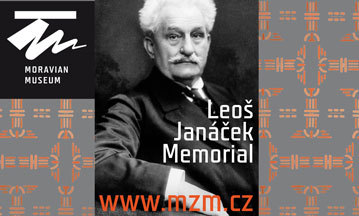Janáček's Theatre, NdB
Conductor: Tomáš Netopil
Violin: Viktoria Mullova
Orchester de la Suisse Romande
Edited by Tomas Ille
Dmitri Shostakovich: Concerto for Violin and Orchestra No. 1 in A minor, Op. 77
Leoš Janáček: Suite from the opera Vec Makropulos – premiere (edited by Tomáš Ille)
Modest Petrovich Mussorgsky: Pictures from an Exhibition (instrumentation by Maurice Ravel)
Along with Sergei Prokofiev, Dmitri Shostakovich belongs to the most prominent Russian composers of the 20th century. The Concerto for violin and orchestra in A minor belongs to the post-war, very difficult period for the composer, connected with Stalin's renewed rampage. Shostakovich composed the concerto in 1947-48, and it reflects a difficult and hopeless time. The concert could only be premiered in 1955, the solo part was performed by the legendary David Oistrach. The composition, which is very difficult to interpret, is very thoughtfully composed, and in terms of sonority and seriousness of the idea, it is close to the author's symphonic work.
Leoš Janáček did not write many works for symphony orchestra and concert performance. Perhaps that is why suites from his operas, which can be performed at symphony concerts, began to be created after the composer's death. The first suite was composed already in 1937 by the conductor Václav Talich, from the opera The Adventures of the Bystrouska Fox. The new Suite from the opera Vec Makropulos was prepared by Tomáš Ille and will be performed at the concert in its world premiere.
In 1873, Modest Petrovich Mussorgsky's friend, the architect and painter Viktor Hartmann, died suddenly. Both were prominent personalities of the artistic association Mocná hrstka. In January 1874, an exhibition of Hartmann's drawings, watercolors and maquettes was held at the St. Petersburg Academy of Arts on the initiative of Vladimir Vasilevich Stasov, the esthetician and spiritual leader of the Powerful Hand. Mussorgsky also attended the opening and returned to the exhibition halls repeatedly. He decided to honor his friend's memory with music - that's how Kartinky s vystavki, i.e. Pictures from the exhibition, came into being. Originally a piano cycle, after the composer's death he received several instrumental modifications, the most famous of which is the one by Maurice Ravel. Mussorgsky captured ten of Hartmann's pictures in ten contrasting, evocative miniatures, which belong to the author's best-known works.





